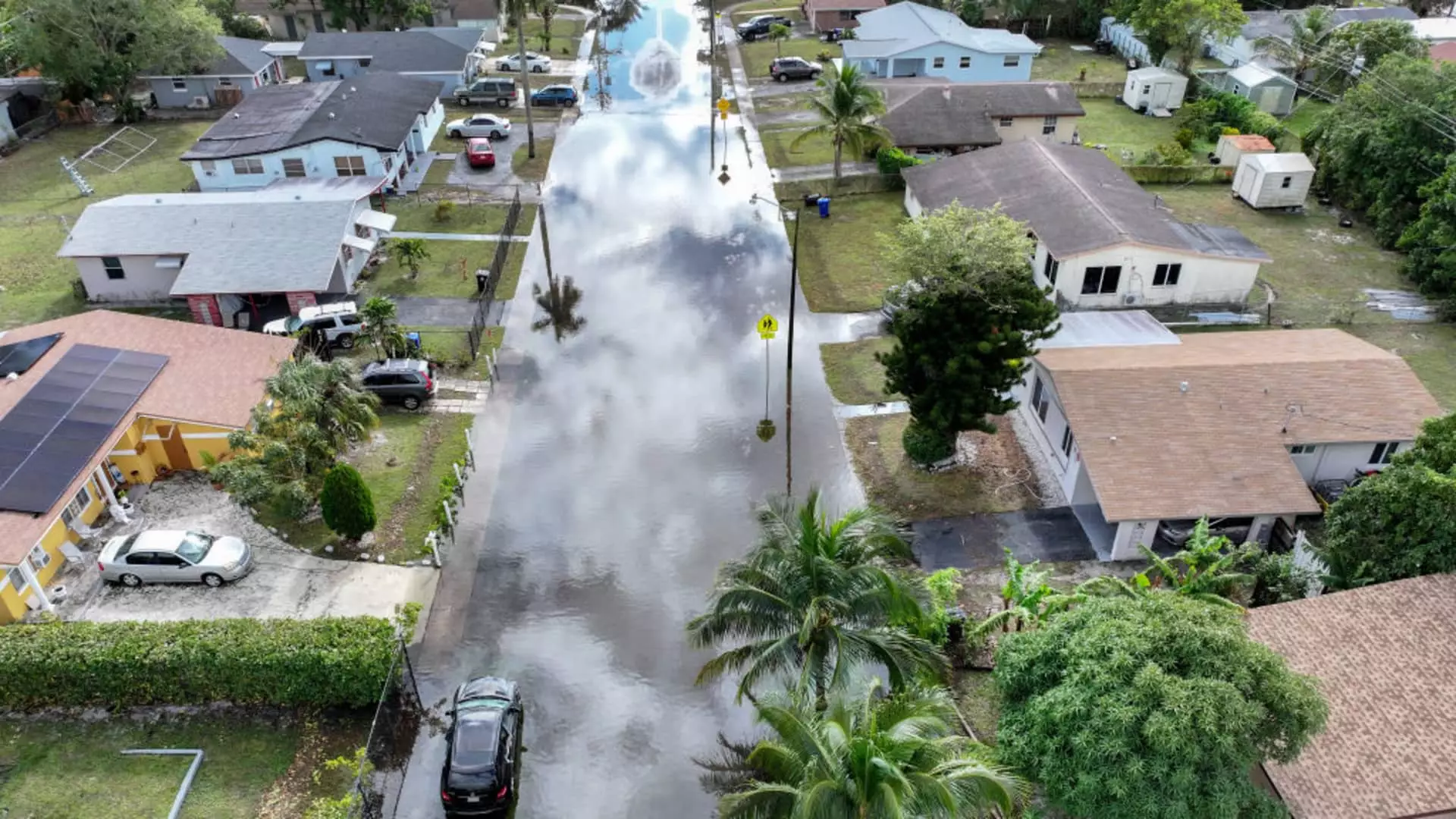In the evolving landscape of mortgage lending, a new factor has emerged that transcends traditional financial metrics such as credit scores, income, and existing debt—climate change. As the frequency and severity of natural disasters escalate, lenders are re-evaluating the calculative parameters of creditworthiness, and the implication for borrowers could be catastrophic. The reality is becoming grim: homes situated in areas vulnerable to environmental catastrophes are not just at immediate risk; they are poised to become financial liabilities. According to a recent report from First Street, the implications are startling—projected losses from climate-driven foreclosures could swell to a staggering $5.36 billion within a decade, equating to nearly 30% of all foreclosure losses. The days when cozy homes along the Florida coast were merely investments are fading; now, they hang precariously on the precipice of natural upheaval.
The Insurance Apocalypse
Insurance companies, tasked with safeguarding homeowners, mirror the growing apprehension surrounding climate risk. Struggling to adapt to increasing financial demands, many insurers have pulled back from high-risk regions, creating a perfect storm of skyrocketing premiums and disappearing coverage options for residents. Recent storms have wreaked havoc, causing insured losses that are inching toward $1.21 billion in a single year. The analysis conducted acknowledges a direct correlation between rising premiums and increased foreclosures—some homeowners simply cannot shoulder the exorbitant costs and are opting for abandonment instead.
This alarming trend does not just impact individuals; it creates a dizzying loop affecting lenders who find themselves tethered to defaults in environments they previously deemed stable. The fallout is profound: exorbitant insurance rates and the threat of mortgage rates surging higher are poised to compound the financial instability of households already teetering on the edge. Homeownership, once a hallmark of the American Dream, is turning into a nightmare for many.
The New Underwriting Paradigm
Historically, mortgage underwriting has been anchored on measurable financial metrics and collateral strength. However, as Jeremy Porter from First Street indicates, the waves of climate risk are reshaping foundational assumptions underlying this model. The moments of reckoning are already unfolding in states like California, Florida, and Louisiana, where properties hit by flooding see an astonishing 40% spike in foreclosure rates compared to their unflooded counterparts. It’s a lesson in risk management gone awry. As lenders start to factor climate-related risks into their evaluations, borrowers could find their credit scores swinging violently—either plummeting due to elevated risks or perhaps surprisingly buoyant in less affected areas.
Such a paradigm shift introduces a pernicious reality: those seeking affordability could find themselves penalized in the eyes of lenders as climate risks shape their lending landscape. The fact that Fannie Mae, a primary player in mortgage funding, has yet to embrace this inevitable shift indicates both urgency and negligence; it cannot afford to remain complacent while the climate crisis unfolds rapidly around it.
The Ripple Effect on Households and Investments
The steep climb of climate-related costs over the past four decades—an outrageous 1,580%—is not merely a statistic; it showcases a systemic issue affecting American households and financial institutions alike. The dual impact of climate change includes direct damages from increasing storm severity and indirect consequences propelled by inflation and population growth in precarious zones. This is no longer just about geographic ambivalence; Americans are increasingly drawn to coastal areas for the promise of idyllic living, unknowingly courting disaster while the real estate market burgeons around them.
Financial portfolios are inherently at risk as climate factors infiltrate the architectural integrity of real estate investments. Investing in properties rendered uninhabitable or excessively costly due to insurance premiums could mean recalibrating the entire paradigm of wealth creation in America. As Porter frames it, there remains an “amount of credit loss risk related to climate that is currently hidden from traditional credit loss models.” Homeowners are navigating through murky waters; some do so with full awareness and preparation, while others tread unknowingly toward financial ruin.
In summation, while the world increasingly recognizes the urgency of the climate crisis, the financial sector must awaken to the transformative reality it presents. Mortgage markets are being redefined, and understanding that climate-related risks are now integral to financial valuations is paramount. The longer lenders and homeowners deny this truth, the greater the potential for devastating consequences. We are at a pivotal moment where decisions made today will echo through generations, shaping not just financial futures, but the very fabric of our communities.

